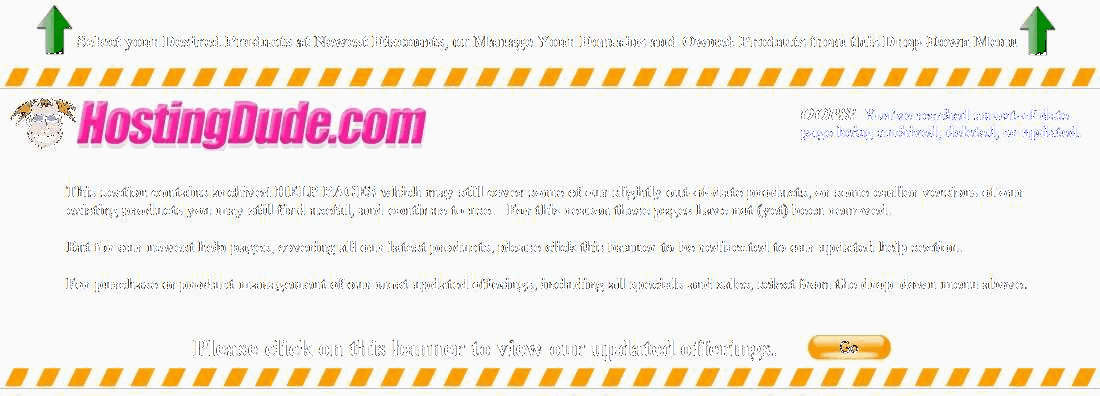Setting up Quick Content
After you add a domain name to your Quick Content account, you can use these instructions to set up the new mini website. See Adding Quick Content to Domain Names for more information.
You can enter the site title and description, select your website template, add pages, and specify the type of content you want to display on each page.
You can also add advertisements from your Google AdSense® account. Adding AdSense ads to your mini website lets you use Google Webmaster Tools to track indexing statistics and use Google Analytics to track site traffic, keywords, and more.
In addition, you can use custom HTML or JavaScript to add affiliate banners to the advertising sections of your site. Affiliates earn commission for promoting products and services on their sites. Numerous companies offer affiliate programs, such as Go Daddy®, Commission Junction®, and Amazon®. For more information, see What is the Go Daddy Direct Affiliate Program?.
Likewise, you can add custom meta tags for your entire site. Meta tags tell crawler-based search engines how to search and describe your website. For more information, see Managing Your Quick Content Custom Meta Tags.
NOTE: AdSense ads, affiliate banners, and custom meta tags are optional. If you do not want to use them, leave the fields blank.
To Set Up Quick Content for Your Domain Name
- Log in to your Account Manager.
- Next to Quick Content Site, click Launch.
- Click Start Setup next to the domain name.
- On the Site Information screen, do the following:
- Site title — Enter the title you want to use as the header for your site.
- Tagline — Enter the description you want to use for your site. The description displays beneath the site title.
- (Optional) Google AdSense Publisher ID — Enter your Google AdSense publisher identification number. For example, enter pub-1232929292.
- (Optional) Google Analytics Web Property ID — Enter the Web Property ID for your site. When you log in to your Google Analytics account, the ID displays next to the website name. For example, enter UA-123456.
- (Optional) Google Webmaster verification code — Enter the the content phrase from the code that Google Webmaster Tools provides.
For example, if Google Webmaster Tools provides <meta name="verify-v1" content="X/N0rc/9BipqP3FYzZSURSPkKlE9nD5cgSfz94rxMsg=" />,
then enter X/N0rc/9BipqP3FYzZSURSPkKlE9nD5cgSfz94rxMsg=.
- (Optional) To display Google AdSense ads, click Advanced Advertising, and then select one or more of the following:
- 160 x 600 — Select Google Wide Skyscraper ad, and then enter the google_ad_slot number that displays in the code you generated for a Wide Skyscraper advertisement.
- 250 x 250 — Select Google Square ad, and then enter the google_ad_slot number that displays in the code you generated for a Square advertisement.
- 728 x 90 — Select Google Leaderboard ad, and then enter the google_ad_slot number that displays in the code you generated for a Leaderboard advertisement.
NOTE: To prevent an advertisement type from displaying, select Do not show ad.
- (Optional) To display affiliate banners, click Advanced Advertising, and select one or more of the following:
- 160 x 600 — Select Affiliate ad, and then paste your custom HTML or JavaScript code in the field.
- 250 x 250 — Select Affiliate ad, and then paste your custom HTML or JavaScript code in the field.
- 728 x 90 — Select Affiliate ad, and then paste your custom HTML or JavaScript code in the field.
NOTE: For each size, you can only display a Google ad or an affiliate ad. To prevent an advertisement type from displaying, select Do not show ad.
- (Optional) To add custom meta tags for your entire site, click Custom Meta Tags, click Add Meta Tag, enter a Name and Value, and then click Add. For more information, see Managing Your Quick Content Custom Meta Tags.
- Click Next.
- In Template Settings, select the template you want to use for your Quick Content site. For more information, see Selecting Templates for Quick Content Sites.
- Click Next.
- In Keywords, enter up to four keywords, separated by a comma, and then click Add.
NOTE: For each keyword you enter, Quick Content creates a page with related content. For more information, see Managing Your Quick Content Keywords.
- Click Next.
- From Select page, select Home.
- Select one of the following to format your Home page, and then click Next:
- Activate Auto-Create — Quick Content auto-generates the content for your Home page based on your keywords.
- De-Activate Auto-Create — Select this option if you want to create custom content for your Home page. Enter the Home page content, use the editor tools to format it, and then click Save.
- Click Change Nameservers to change the domain name's nameservers. Your Quick Content site does not display until you update the domain name's nameservers to point to our Quick Content nameservers.
NOTE: If your domain name is registered through another registrar, contact them to change the nameservers to:
hpns01.domaincontrol.com
hpns02.domaincontrol.com
Allow up to 48 hours for the nameserver change to propagate and your new website to be available on the Internet. - Click Publish, and then click OK. The Status column lets you know when your website is available on the Internet. Possible statuses include:
- Processing updates — We are processing the information you submitted for your new website.
- Waiting to publish — We are in the process of publishing your new website.
- Published — We published your new website. You can click Preview to view it.
NOTE: As a courtesy, we provide information about how to use certain third-party products, but we do not endorse or directly support third-party products, and we are not responsible for the functions or reliability of such products.





